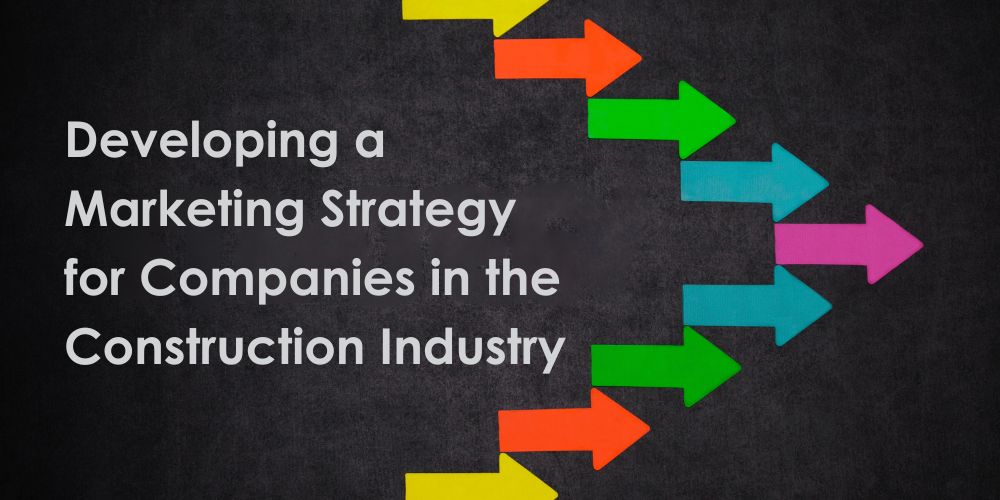The Three Keys to Developing a Successful B2B Marketing Strategy
“The ultimate goal of B2B marketing strategy is to generate leads that turn into revenue. Period.”
Matthew Barksdale, ZAG FIRST B2B Marketing
Effectively generating B2B leads that turn into revenue is easier said than done. A sports team can’t go into a big game thinking “we just have to score more points than our opponents” and magically make it so–they need a game plan and a specific strategy for success. Similarly, B2B companies need a clear road map for their B2B marketing strategy that enables them to set clear goals, track progress towards those goals, and maximize opportunities for achieving them.
B2B digital marketing has expanded greatly in scope over the last decade, meaning that there are now dozens (if not hundreds) of potential strategies and tactics. It can be overwhelming to think about the number of options for your marketing strategy–which is why it’s important to first master the fundamentals. In this article, we’ll discuss the 3 key strategic components of a B2B Marketing Strategy that will underlie the rest of your digital marketing plan.
#1: What makes your company unique – Clearly define your niche
A company’s niche is what makes them unique and sets them apart from competitors in their industry. How are you different from another company that offers similar services? What specific aspects of your product or service deliver the most value to your customers?
It’s better to be the best at one important thing than okay at everything. Instead of trying to be all things for all people, find a gap in the market that your company can uniquely fill. Maniacally focus on the needs of your target customers while abandoning everything else. You likely don’t have the budget to market to every audience segment, so make strategic decisions about who most needs to understand your business’s value.
Niche-driven marketing can help companies stand out in a crowded market, by offering something unique and targeted to a specific group of consumers. Additionally, by understanding the needs and wants of a specific market segment, businesses can create products or services that better meet those needs, leading to increased customer satisfaction and retention.
To define your niche, start by conducting market research such as surveys and focus groups to gather information about consumer demographics, preferences, and buying habits (if you can’t collect this data on your own, consider partnering with a B2B marketing agency that can help). Use that data to identify a target market segment that has the greatest need for your product or service–then, develop a value proposition that speaks directly and specifically to the needs and wants of that segment. This can be done by creating tailored products or services, or by adjusting the messaging and positioning of existing offerings. It’s also important to employ appropriate and effective marketing channels to reach that target audience. Some customer segments may make buying decisions based on social media, while some might be much more influenced by email marketing or targeted advertising. Figure out where your target customer seeks out information, and create a digital marketing strategy tailored to those channels. Finally, track the performance of your marketing efforts so you can adjust them as needed to ensure you’re reaching the right people and achieving the desired results.
#2: What do your ideal prospects REALLY care about – Build buyer personas
A buyer persona is a representation of your ideal customer. Creating personas can help you understand your target audience and identify relevant information about them, including their preferences, buying habits, and demographics. Of course, there is such a thing as too much data–we don’t care about their zodiac sign or their favorite color, unless these factors influence their purchase decision. But find out what your target audience cares about and what they do (and don’t!) buy.
Depending on your industry, B2B marketing personas can vary greatly and a single company may be targeting multiple different personas. In construction, the architect, general contractor, and owner all have different (and sometimes competing) priorities. In manufacturing, the engineer, the buyers, and the C-Suite should all be treated as separate personas with separate goals and needs.
Once you’ve identified your personas and gathered relevant data on them, think through their search strategy. What terms would they search for to find your product or service? Are they more likely to use common terminology or industry-specific jargon? If their sink broke, are they searching for “sink repair” or “where to get my sink fixed near me” or “how much does it cost to get a sink fixed”? Create lists of keywords that your personas use, and incorporate those keywords into your digital marketing tactics wherever possible.
Finally, consider which digital marketing channels can most effectively reach each persona (spoiler: the answer is not always just Google searches). Would a particular persona be more likely to look up tutorial videos on Youtube? Do they scroll through LinkedIn during their lunch break? Are they out in the field all day and not online during working hours? Create a chart with different marketing channels on one axis and different personas on another axis, and then map out the best channel for each persona.
#3: Content is (once again) king
Was it ever dethroned at all? Even the best B2B digital marketers can only take traditional advertising so far. Your target customer is much more likely to purchase your product or service if you provide them with relevant, valuable, accessible content that demonstrates your business’s expertise in your field and makes some aspect of their job easier.
Once you know your niche and your target personas, develop engaging content that would be of real benefit to them. Write articles explaining how your product or service works in a way that the consumer can easily understand. Explain the factors that go into a purchase decision, or how much a product or service does and should cost. To develop content ideas, think about common questions your customer asks you, or popular breakout session topics at conferences. By now you should know your clients and what they find valuable, so develop your content strategy to deliver maximum value.
There are three main factors to consider when developing content:
- Where is the audience in the sales funnel? Your content will be very different if it’s targeted to a customer at the very top of the sales funnel (still trying to figure out what problem they’re even trying to solve) vs. at the very bottom (they know exactly what they’re looking for and are comparing different buying options).
- What keywords are you focusing on? Keep Search Engine Optimization (SEO) best practices in mind and focus on keywords that you know your audience is searching for.
- How will you adapt your content for multiple different marketing channels? It takes a lot of time and effort to develop content, and you want to get a lot of bang for your buck. Consider how you can break your content into smaller chunks and repurpose it across your website, LinkedIn, email marketing campaigns, and other marketing channels.
Developing an effective B2B digital marketing strategy can be complicated, but by focusing on these three strategic cornerstones, your business will be well-positioned to maximize your marketing ROI.
How we can help
And at ZAG FIRST Digital Marketing, we put our money where our mouth is: we realized early on that we couldn’t do effective marketing for all companies and industries, so we carved out a niche as a B2B digital marketing agency focusing on construction, manufacturing, and professional services companies. We have deep knowledge of those industries because we work with them every day, and understand what drives the behavior of customers in these markets. If you’re looking for experts to help you develop your marketing strategy and generate new leads, let’s talk.





